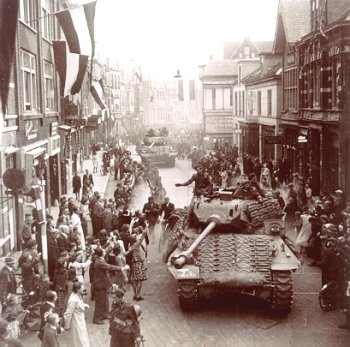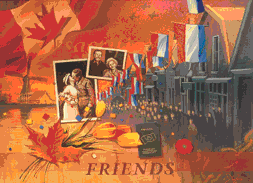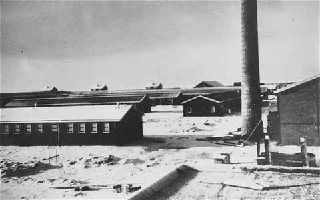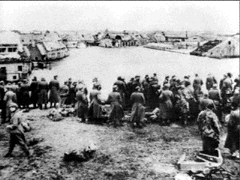When
Holland was overrun by the Nazis in May 1940, Queen Wilhelmina sought refuge
in England. In 1942, the Crown Princess Juliana was persuaded to leave
for Canada where she made her wartime home. When victory was secured in
1945, Princess Juliana and her family returned to their homeland where
they found the people recovering from the ravages of war.
Initial
Allied landings on the beaches of Normandy on June 6, 1944, included the
First Canadian Army being assigned the task of clearing the coastal areas
and opening the channel ports for vital supplies. The First Canadian Army
was international in character. In addition to three Canadian divisions
it had a Polish Division, a British Corps, and at various times American,
Belgian and Dutch troops.
The 2nd
Canadian Division being welcomed to Dieppe. Boulogne, Calais, and Cap Gris
Nez followed, and by the end of September the Channel coast,
In September,
in southern Holland the British and American troops had pushed forward
on a broad front. the 2nd British Army mounted an airborne attack
to secure river crossings at Grave, Nijmegen and Arnhem.
..
 |
On
17 April, 1945,
the
Canadian lead tanks
roll into Apeldoorn, loudly cheered by relieved residents.
The Liberation
of the Netherlands was completed on May 5, 1945 by the First Canadian Army
|
..
In
celebrating the
Liberation
of the Netherlands
The
Original painting "FRIENDS"
was
presented to the
Mayor
of Burlington, Ontario
by
the
Canada
Netherlands Friendship Association (CNFA),
|

Painting
by: Jason Bouwman
See
his PORTFOLIO
|
The
Bouwman Home Page
|



